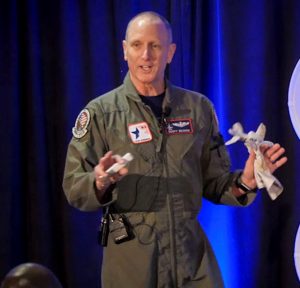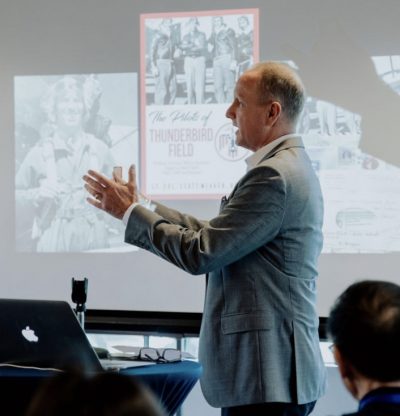The Fighter Pilot Guide to Pitching. Rise and Grind – The Pilot and the Pitcher
By the Pilot and the Pitcher. Lt. Col. Scott “Hurler” Weaver and Coach Eric “Lefty” Niesen
Scott: I just downloaded the book written by Raymond John titled “Rise and Grind.” I wish I had coined the phrase because it’s something I aspire to every day when I get up. But I would add – Rise and Grind with a passion!

I truly started to understand the term, “rise and grind with a passion,” when I was a young Lt. In the USAF. I’d been selected to return to Vance AFB, Enid OK, as a T-38 First Assignment Instructor Pilot or T-38 FAIP. To be selected a FAIP was an honor. To fly the T-38 as an instructor is a dream. The jet was the first supersonic trainer. It had been around the block for several decades, but you could call it the “sports car” of a jet. It had tandem seats – with the Undergraduate Pilot Training (UPT) cadet in the front seat, and the Instructor Pilot (IP) in the back seat.
We all wore “fast pants” as we called them, referring to our G-suits, which made it even cooler. The Tweets or T-37 guys didn’t pull enough sustained G’s to warrant a G-suit. But moving from one side of the table as a 2LT and “stud” or student, to the other side as a 1LT and instructor pilot quickly became a grind. I often refer to my three years as a FAIP as an extension of UPT. Or I tell people, “It took me four years to finish pilot training – 1 year as a student and 3 years as an IP.”
Rise and Grind meant getting up every day and flying one to three sorties of flights a day. You had to have that passion to make yourself a better instructor pilot, knowing you’re helping train the best pilots in the USAF. Every 5 ½ months we’d get a new class and recycle the entire program again. We’d switch each week from “early to late” start, meaning one week we’d have a 0600 report then the next week shift to a 0900 report.
While the schedule became a grind, I had a passion to fly and to instruct. It was hard work, but rewarding, especially knowing that I helped craft young men and women into the future pilots and leaders of the USAF.
.jpg)
Eric. That phrase, “Rise and Grind with a Passion” is equally pertinent to ballplayers. When it comes to recruiting ballplayers, we look for the prospective recruit who has a passion and love for the game. While each player is slightly different, once a player buys into the “Rise and Grind” system, we know we’ll get the most out of that player. While their natural talent got them this far, our job is to work with them to achieve their maximum potential.
As a ballplayer who wanted to be as successful as possible, the rise and grind was real. I was always told I was too small to play or pitch at a higher level. That comment made me dig down even deeper. It was up to me to dispel that theory. I worked on it constantly. You can’t just have that chip on your shoulder during a game, but you need that incentive almost daily – during workouts, practice sessions and when rising and grinding every day.
To be clear, just to say “rise and grind” everyday doesn’t always work. There are no set methods or “cookie-cutter” programs that we force on our players to make them excel at what they do. Getting up at 0600 to work out won’t make you a better baseball player, but working out smarter, whenever it’s best for you, might be a more successful program.
Rise and Grind by itself is not enough. You have to have goals and an unwavering passion. We tell our recruits to push their body’s limits – perhaps limits they’ve never experienced before. We tell them to take advantage of their opportunity here – not only as a player, but as a student. Once an athlete starts seeing progress – like a faster pitch, better flexibility and increased strength, they realize the Rise and Grind is worth it.
Strategic Combination.


The Fighter Pilot’s mental view of pitching comes from Lt. Col. Scott “Hurler” Weaver. The Coach’s perspective on the physical side to pitching comes from Coach Eric Niesen, pitching coach at Georgetown University. Learn more about The Fighter Pilot’s Guide to Pitching.
About Me

Scott Weaver is a public speaker, author, pilot, aviation historian and retired Lt. Col. USAF.